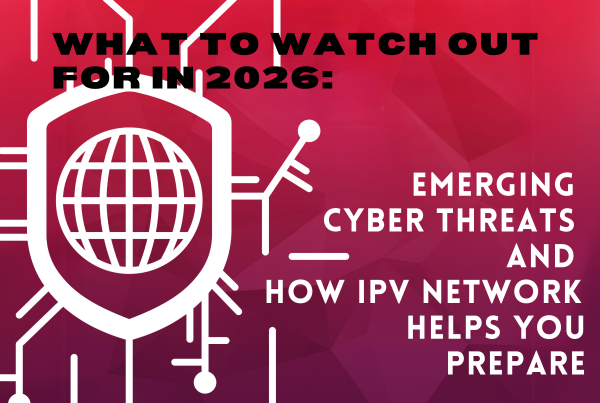As technological advances continue to boom, businesses are more compelled to adapt to a digital workspace. It has become a necessity for a majority of companies as people depend more and more on their devices and the internet. However, digital transformation also comes with cybersecurity risks.
What is Digital Transformation?
Digital transformation refers to the process of integrating digital technologies into a business’ system and process to create a new experience for customers. Sales, customer service, and marketing are mostly conducted online and corporations utilize different platforms such as social media to reach a wider range of audiences. With the increase of demand online, companies must create an online presence to keep up with competition and future development.
With the arrival of the pandemic, businesses were forced to shift to remote work to keep up operation, which pushed the rise of the adoption of new technologies. Large and small organizations were investing in their digital transformation to adapt to the times. Retailers such as Uniqlo and Puregold started utilizing delivery services and no-contact options to ensure the safety of their customers. Most of their operations and transactions were managed online to keep up with demand. However, with the inception of new technologies such as artificial intelligence, the cloud, social media, and such, threats were steadily increasing.
Threats and Risks
The increase of digitalization of businesses opened new risks and threats. Cyberattacks and data breaches have increased tremendously just these past two years, especially with the emergence of the pandemic. Experts say that breaches are directly linked to digital transformation, making it important for business leaders to rethink cybersecurity protection.
Cyberattacks such as ransomware have become a prolific problem for many organizations. Experts have seen a spike in ransomware attacks, targeting all sorts of organizations. Last year, we saw a common trend for hackers to use the pandemic as a cruel advantage. Threat actors used the fear of the situation to trick people into falling for their scheme by sending malicious links or attachments that posed as legitimate information on Covid-19. Ransomware groups have also been targeting healthcare institutions in dozens of countries, stealing sensitive information, and shutting down operations. These attacks can result in a longer wait, delayed tests and procedures, and, worst of all, an increase in patient deaths. Threat actors are able to adapt to situations and create threats and schemes tailored to them.
As more companies grow and rely on technologies, there are more chances of cyberattacks and data breaches occurring. The majority of leaders do not realize the level of threats that insecure assets pose for their security. Moreover, the increase of employees working from home adds more risk for a breach to happen. A large number of at-home devices and connections do not have the proper security that company devices and networks have, creating a potential entryway for threat actors. As technology advances, cyber attackers are also honing and developing their skills and methods to adapt to the ever-changing times.
The Journey
These days, digital transformation has become a necessary step for companies to take. Though there are risks and challenges involved, digitalization allows businesses to reach a wider range of people and increase their leverage on the market. Companies can be more efficient and flexible while giving their customers a better overall experience. That’s why business leaders must understand how to protect themselves from cyberattacks and breaches during the transition. Here are some suggestions:
- Train employees: Companies need to ensure that their employees are knowledgeable and skilled enough to navigate through the cloud and other modern technology. It’s always important that employees are aware and informed about the ins and outs of a system and the potential dangers there are on the web.
- Control and manage: As businesses go through the process of digitalization, they need to take note of how threat actors might try to harm them. By managing access and setting controls, businesses can prevent cyberattacks from happening.
- Third-party support: Getting support from an expert cybersecurity company can aid businesses in their digital transition. Third-party services and products can greatly enhance a company’s system and security by establishing the necessary components to combat cyberattacks. By choosing the right cybersecurity company, businesses can have a smoother and more efficient digital transformation journey.
Digitalization is here to stay. By taking the necessary steps, companies can greatly reduce the risks of a breach. Some more threats and risks are involved nowadays and security is under constant threat. As cyberattacks become more sophisticated, your cybersecurity must be two steps ahead of the game.
About IPV Network
Since 2016, IPV Network has been a trusted partner of leading enterprises in the Philippines. It brings the best-of-breed cybersecurity solutions. IPV network helps businesses identify, protect, detect, respond, and recover from cyber threats. Email us at [email protected] or call (02) 8564 0626 to get your FREE cybersecurity posture assessment!
References:
Glick, Molly. “Cyberattacks on Health Care Are Rising — But Many Hospitals Aren’t Prepared.” Discover Magazine, 14 Sept. 2021, www.discovermagazine.com/technology/cyberattacks-on-health-care-are-rising-but-many-hospitals-arent-prepared.
“What Is Digital Transformation?” The Enterprisers Project, enterprisersproject.com/what-is-digital-transformation. Accessed 7 Oct. 2021.
Boulton, Clint. “What Is Digital Transformation? A Necessary Disruption.” CIO, 24 June 2021, www.cio.com/article/3211428/what-is-digital-transformation-a-necessary-disruption.html.
Bresnahan, Ethan. “How Digital Transformation Impacts IT And Cyber Risk Programs.” CyberSaint, www.cybersaint.io/blog/managing-risk-in-digital-transformation. Accessed 7 Oct. 2021.


